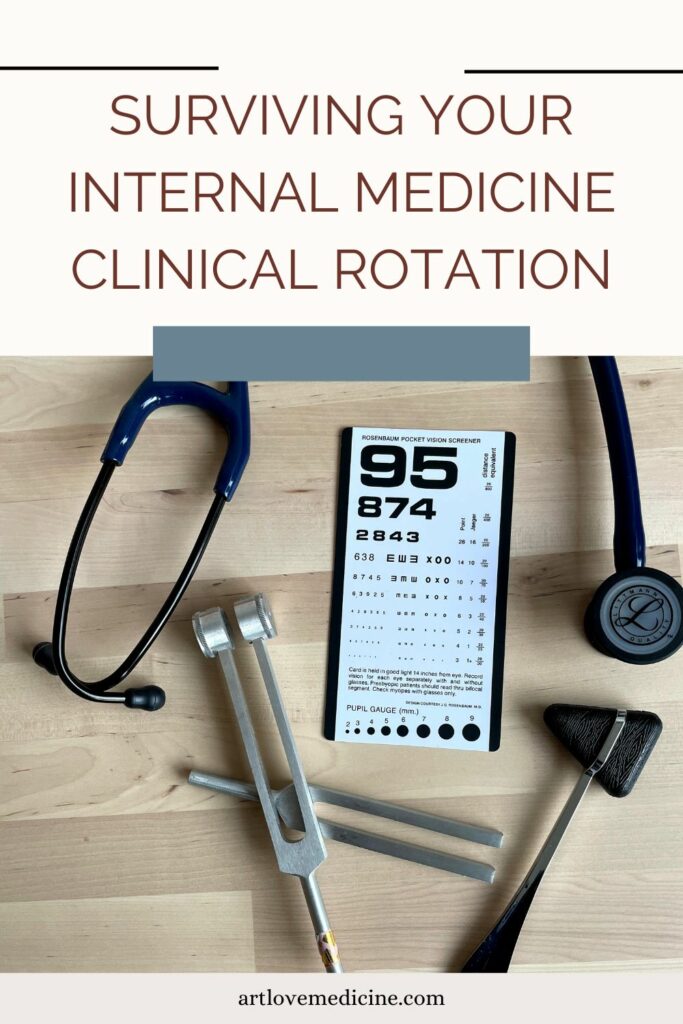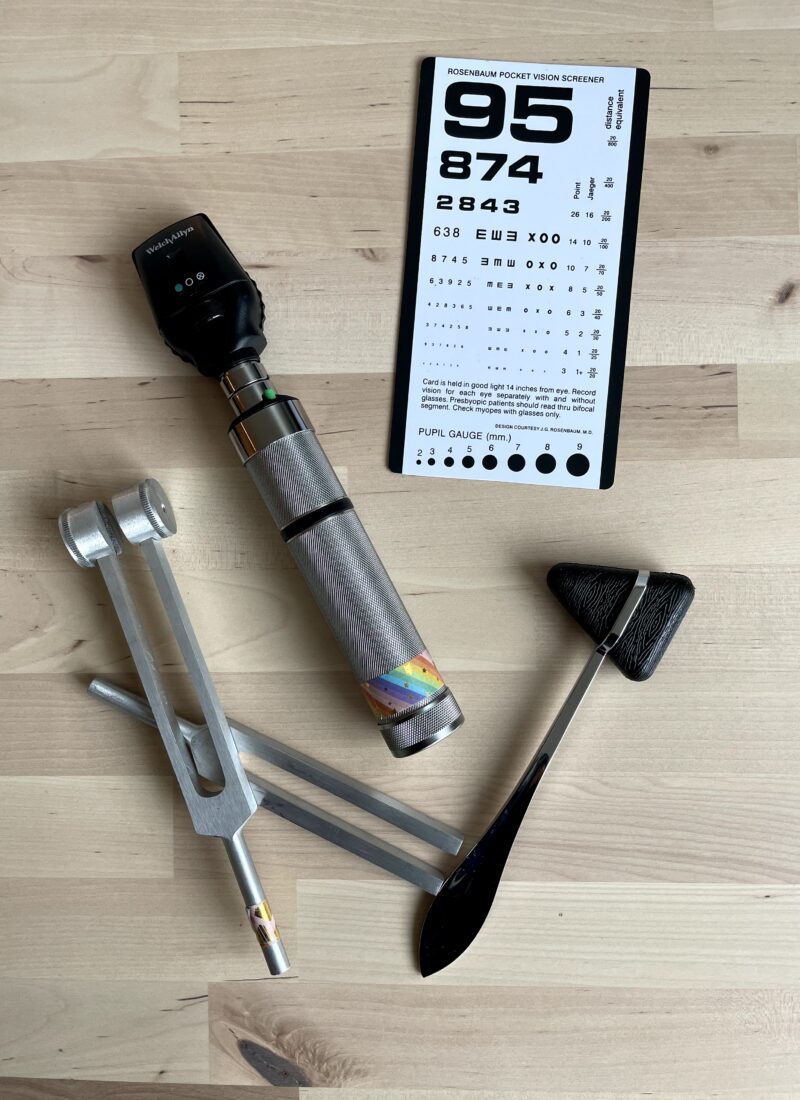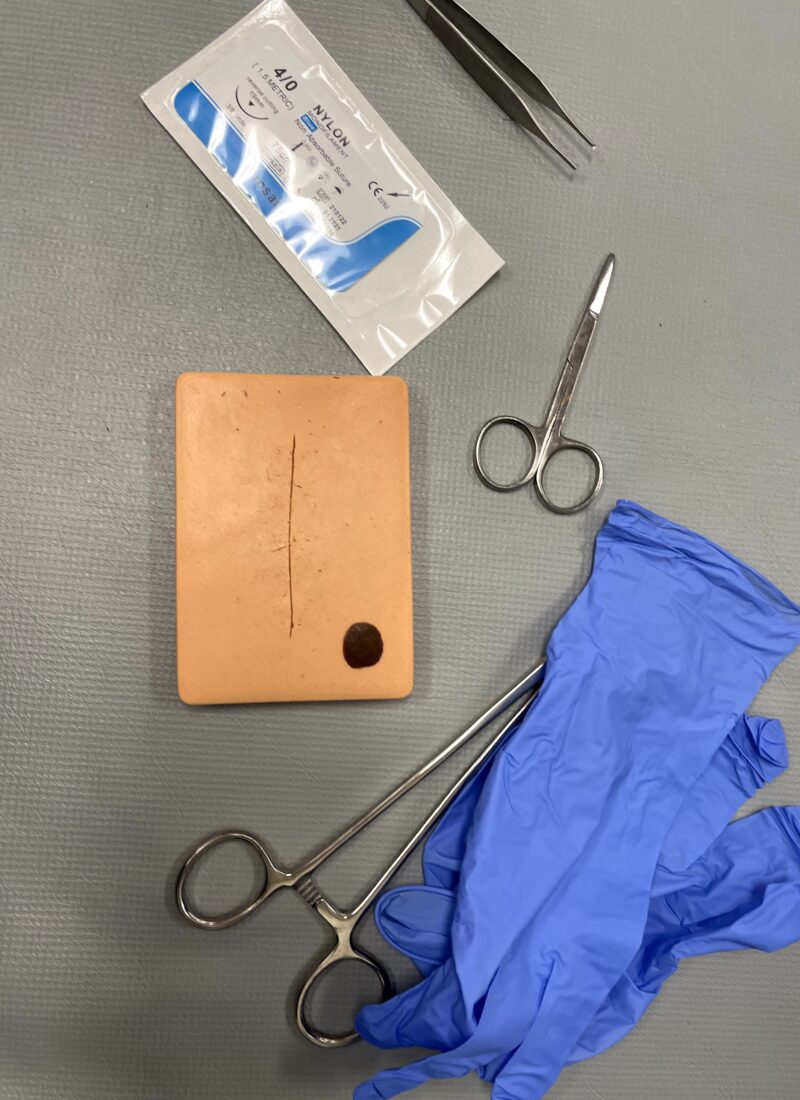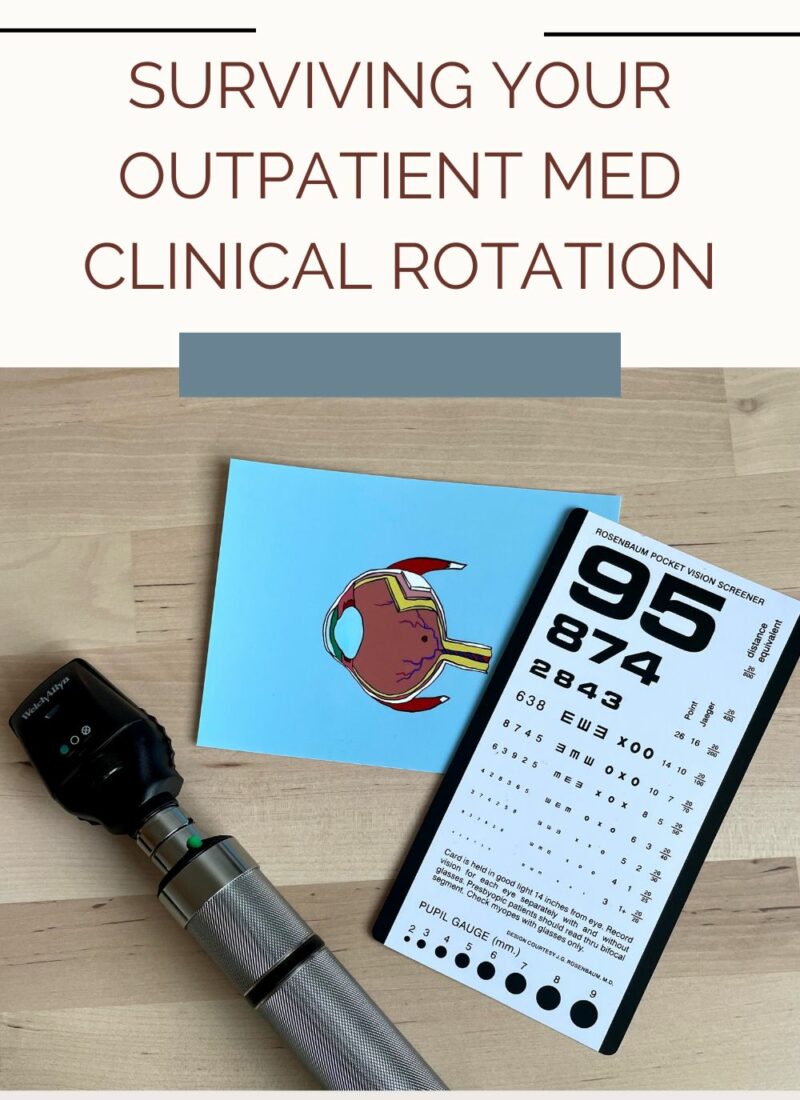The internal medicine clinical rotation is one of those really foundational rotations that can help you grasp important medical concepts well. In internal medicine, you see a lot of sick patients, become familiar with hospital medicine, and work through many labs, medication names, and tests.
It can be overwhelming, especially if it is your first main hospital experience. I hope that this guide can help you prepare and succeed in your internal medicine clinical rotation.
***Note: Included in this post are links to some Amazon products. As an Amazon Associate I earn from qualifying purchases (at no extra cost to you), but don’t feel pressured to buy anything! I only include links to products that I have tried or would use myself.
Please note, this is just my personal experience and all opinions and recommendations on this blog are my own. My opinions and recommendations do not reflect the opinions or recommendations of my employers or schools. Nothing in this article is intended as medical advice. I share all this information to share information I wish I would have known prior to my experiences. Everything on the blog is just my opinion and experiences.
My Internal Medicine Clinical Experience
My internal medicine clinical rotation was 8 weeks long and on the inpatient floor in a local hospital that saw a wide variety of patients. It was one of my first rotations, so there was a ton to learn.
For most of my rotation, I was with a PA, who gave me a lot of autonomy as a student to allow me to learn. I thought that it was a really good experience and allowed me see many patients. My preceptor also had me evaluate all of the labs and tests for every patient to give her a report and practice writing notes for each patient.
There were a lot of patients that spoke various different languages other than English, so it was really eye-opening to me of how important translation services are for patients. It also helped me to pick up a lot of medical Spanish and inspired me to take a medical Spanish certification course (hopefully in the next few months!).
I learned a lot in internal medicine and feel that it is a super important clinical rotation. You learn things in internal medicine that you will use in any specialty of medicine.
Things to Review Before your Internal Medicine Rotation
- Labs, labs, labs
- Electrolyte imbalances
- Chronic kidney disease
- Reading x-rays
- Diabetes management
- Fluid resuscitation
- Congestive heart failure
- Atrial fibrillation
- Dysrhythmias
- Post-op infection
- Alcohol withdrawal prevention and treatment
- Antibiotics (especially IV antibiotics)
Some procedures to review because you may see them or do them
- IV placement
- NG tube placement
- Foley catheter placement
- Wound dressings/ wound vacs
- Lumbar punctures
Tips for while on your Internal Medicine Rotation
Be prepared
Always be prepared before rounds or before you see your patient. I always tried to read all of the new notes, looked at the latest labs, and reviewed the recent tests before I saw my patients each morning. Reviewing everything before you go and see your patients will help you know what to look for and what to ask when you do see the patients.
Keep note of the most recent labs when seeing the patient and have note of them so that you can share them with whoever you are presenting to if asked. There’s a reason you constantly monitor the labs as one changed value could indicate a medication needs change et cetera.
Correlate the tests to the patient
When reviewing the labs or tests in the morning, you may panic if you see a value is completely off. Make sure that you correlate the lab values to the patient. If you see a potassium value that is completely off the charts, but the patient seems completely fine, then it is more likely that the sample was hemolyzed and the number reported in the computer is falsely high. Make sure you correlate the labs and findings to the patient before you suggest changing any medication or treatment.
Pay attention on rounds
Your internal medicine rotation may or may not have rounds all together. Mine personally did not have formal rounds since it was just me and one other student with a PA, but I know a lot of my classmates were on internal medicine rotations with many other students and had rounds. When on rounds, pay attention. Even if you’re rounding on a patient that is not assigned to you, pay attention to what is being said at rounds and you can definitely learn something.
Be kind to everyone
Everyone deserves kindness and there’s often a lack of it in healthcare. Many people in the hospital are going through some of their worst days, and a little bit of kindness can go long way. Take the extra time to fill up the patient’s water cup, help them put on their socks, or get an extra blanket. The few extra seconds you take to help can make a big difference.
Also, be kind to all of the staff. They work so hard and are stretched so thin. Be a help to them and not a hindrance.
Take notes
On your internal medicine clinical rotation, there will be so many new words, terms, or tests you’ve never heard of. I recommend taking notes so that you can review and look things up later. It’ll help you in your studying too if you can correlate some of the concepts you are studying to real life examples.
Don’t be afraid to ask questions
You will likely have questions at some point (or maybe all the time) on your internal medicine clinical rotation. Don’t be afraid to ask the questions you have. Of course there are right times and wrong times to ask questions, but at least jot them down so you can ask them when your preceptor has a spare moment.
Things to have in your pocket during your Internal Medicine clinical rotation
Stethoscope
Bring your stethoscope of course. I use the Littman Cardiology IV, but I think that most stethoscopes would be fine for what you’ll be doing. I did get my engraved which has been super helpful in preventing people from taking it.
Littman Cardiology IV on Amazon
Pen
Literally any writing utensil works. It’s helpful to have a black or blue pen with you in case you need to write or sign something official. I personally love MUJI pens and have used the same 2 pens for all of my rotations. Since they’re kind of different looking, no one takes them or they’re always returned. They write so smooth and are the only pen I use. I like having a black one and a red one with me.
MUJI pens
Penlight
A penlight is really helpful to have. Some providers use their phone flashlight, but its not great practice and the light usually isn’t bright enough. You probably already have a penlight from your didactic year, but if you don’t there are some good ones on Amazon.
Notebook or sheets of paper folded into quarters
When I did my internal medicine rotation, I used a little 6 inch clipboard that fit into my white coat pocket with loose paper attached. This worked well for me because I had to write down all of the labs, findings, and meds. The other student that was with me used a notebook made for history taking and she liked that method. There are a ton of different options, you just got to find what works best for you.
History-Taking Notebook on Amazon
Phone with MDCalc App
Having MDCalc on my phone was so super helpful for this rotation. In internal medicine, I feel like there are so many different scores to do, like SOFA, CHADS2, SIRS, Wells Criteria, and HEART score. The MDCalc app is really easy to use, but you can also use their website at mdcalc.com .
Study Materials to Use on your Internal Medicine Clinical Rotation
Internal medicine is one of the rotations that you should be studying in some aspect every single day, both for succeeding clinically and on your rotation exam. I personally made a chart of all the topics I needed to study for my rotation exam and studied that along with practice questions. All of the resources here helped me studying in some aspect during internal medicine.
UpToDate
Great to use if your school or hospital provides access to you. It is really good for looking up conditions or tests that you’re not sure about.
Rosh Review
I love using Rosh Review questions, especially closer to the end of the rotation before my test. It really helped me evaluate what I knew and what I didn’t.
First Line Guide
I love First Line Guide and used it heavily for making my charts I used to study with. (Peep some of my illustrations in the cardiology section).
Pance Prep Pearls
Pance Prep Pearls is a classic resource to use in PA school. It is great for looking up or reviewing different conditions you’re unsure about.
ACLS Handbook
If you are ACLS certified, you have an ACLS Handbook lying around somewhere. It is great to review the cardiac algorithms and resuscitation options.
Family Practice Notebook
Even though it has “family practice” in the name, it is a great, FREE, resource to look up various conditions and tests. It gives you all of the information of the disease, testing, and treatment. It is open resource, so take it with a grain of salt, but it is really great considering it is free.
Epocrates
Epocrates is great for looking up medications and everything about each medication. As a student, it is free to create and account and look up medications.
A good acid-base review
A smaller resource, but helpful in reviewing acid-base disorders.
Have some other rotations coming up soon?
Check out some of my other clinical rotation guides:
Emergency Medicine Clinical Rotation
Family Medicine Clinical Rotation
I hope that this was helpful to you! Please let me know if you have any questions or comments!
Good luck in your clinical rotations!
Thanks for reading!
-Liz





Leave a Reply